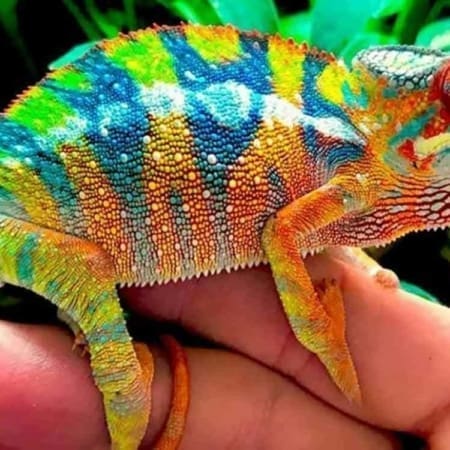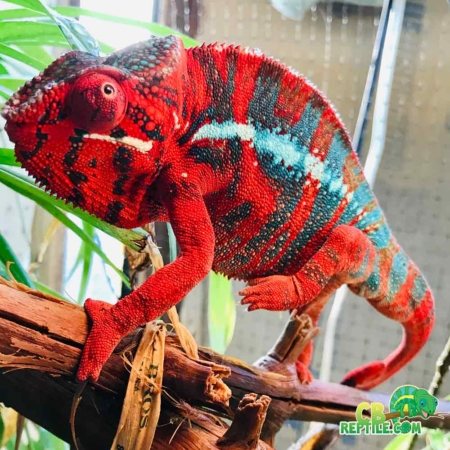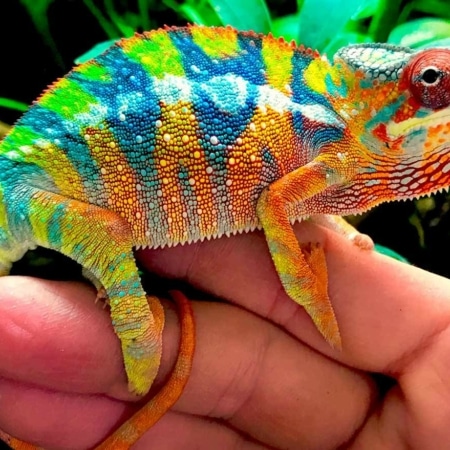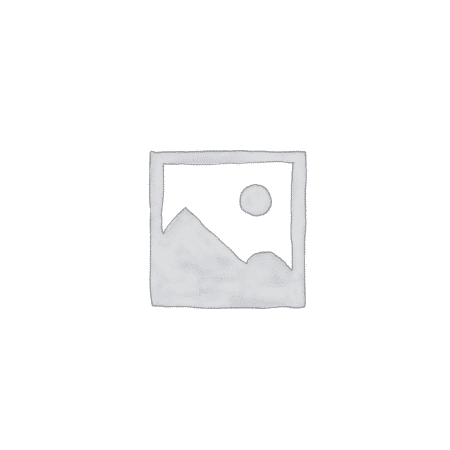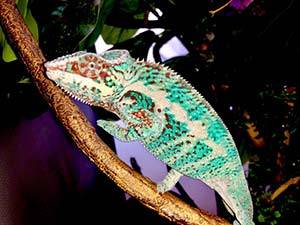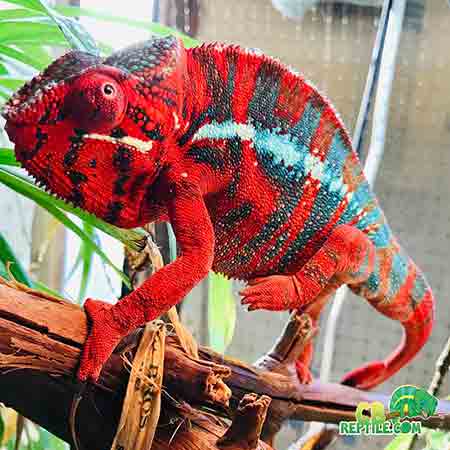Panther Chameleon Lighting, UVB & Heating Guide
Lighting is the foundation of panther chameleon health. Without the correct UVB exposure, visible light intensity, heat gradient, and photoperiod, no amount of diet, supplements, or hydration will make up for improper lighting. Panther chameleons rely on sunlight for vitamin D3 production, calcium metabolism, appetite stimulation, immune strength, and thermoregulation. This makes lighting one of the most important parts of building a healthy enclosure—especially for a young baby panther chameleon just settling into its new environment.
Whether you are setting up your first enclosure or refining the lighting for an entire collection of locales, understanding UVB science, heat placement, and visible light strategy is essential for long-term chameleon success.

Understanding the Role of UVB
UVB (Ultraviolet B radiation) is responsible for allowing reptiles to synthesize vitamin D3 in their skin. Vitamin D3 is then used to metabolize calcium. Without UVB, panther chameleons develop metabolic bone disease (MBD), weakened muscles, tremors, poor appetite, and skeletal deformities. Proper UVB exposure is therefore non-negotiable.
Correct UVB output is determined by:
- The strength of the UVB bulb (5.0 / 6% recommended)
- The distance from the bulb
- Whether there is a screen between the bulb and the chameleon
- The photoperiod (hours of daily exposure)
- The age of the bulb (UVB output declines over time)
Chameleons in nature bask under filtered sunlight in trees, receiving strong but diffused UVB. Our goal is to mimic this safe, digestible exposure inside the enclosure.

The Best UVB Fixtures for Panther Chameleons
The gold standard for panther chameleon UVB lighting is the T5 High Output linear fixture. Compact coil bulbs are not strong or consistent enough for panther chameleons and should be avoided.
Recommended UVB Types:
- Arcadia 6% T5HO (European brand, excellent consistency)
- Zoo Med Reptisun 5.0 T5HO (strong and widely available)
T5HO bulbs produce powerful, reliable UVB penetration appropriate for both juveniles and adults when placed at correct distances.
Proper UVB Distances
Distance matters more than bulb strength. Too close and the chameleon receives excessive UVB; too far and it gets none.
Guideline Distances (Through a Screen):
- Arcadia 6% T5HO: 8–12 inches
- Reptisun 5.0 T5HO: 8–10 inches
The best way to ensure correct placement is to position the main basking branch directly below the UVB at the recommended distance. That primary branch becomes the “UVB zone.”
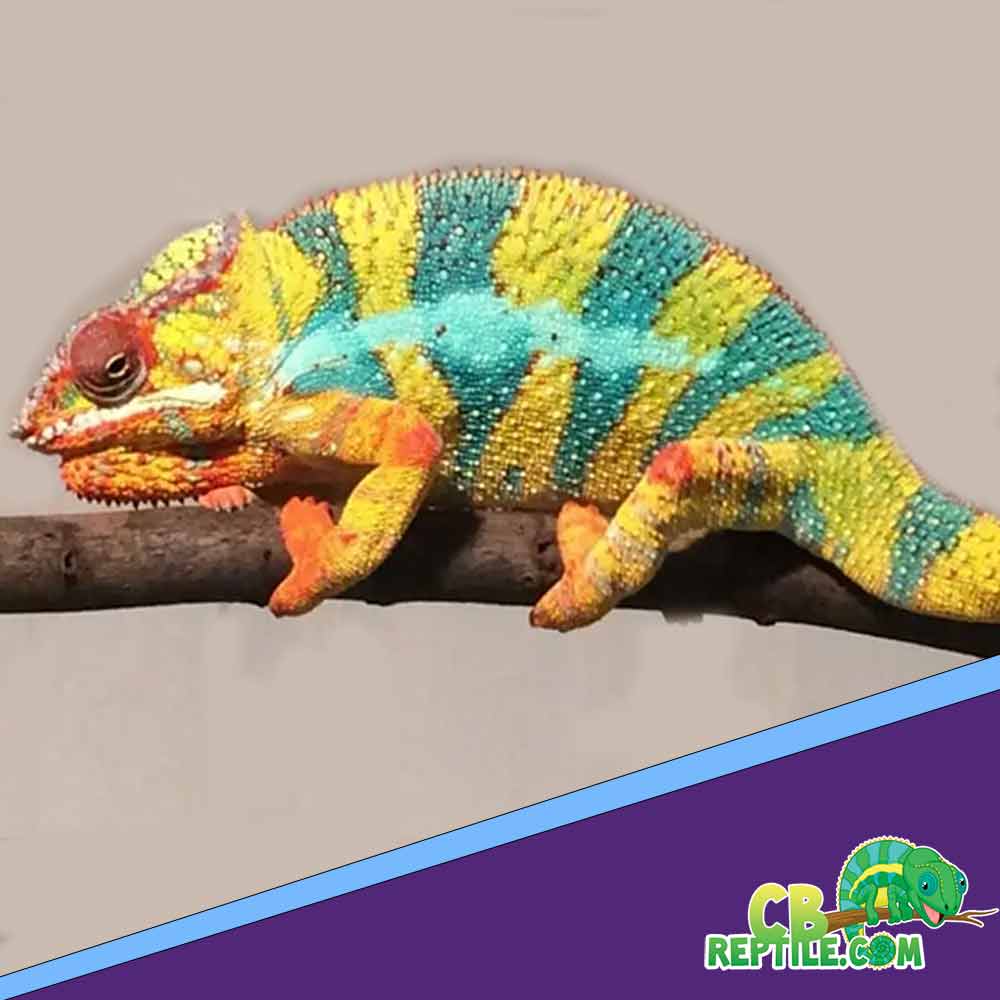
Creating a UVB Gradient
Chameleons need choices. A well-designed enclosure should offer:
- High UVB exposure zone directly under the bulb
- Medium exposure zone in the mid-level branch pathways
- Low or zero exposure zone deep in the foliage
This gradient allows your chameleon to self-regulate UVB intake the same way it would in the wild by moving between sun and shade.
Visible Light: The Most Overlooked Factor
Bright visible light—not UVB alone—is crucial for:
- Appetite stimulation
- Activity levels
- Color vibrancy
- Behavioral confidence
- Plant health (for live-planted setups)
Panther chameleons are highly visual reptiles. Dim enclosures lead to lethargy, dark coloration, and poor feeding response—even when UVB is correct.

Ideal Visible Light Setup:
- T5HO UVB fixture
- LED plant light or full-spectrum daylight bar
- Optional secondary LED strip for large enclosures
Bright, even lighting creates a natural environment where chameleons feel safe, active, and stimulated.
Basking Light & Heat Requirements
The basking light provides heat—not UVB. It should always be used alongside UVB, not instead of it. Heat allows the chameleon to digest food, regulate metabolism, and display natural activity patterns.
Recommended Basking Temperatures:
- Babies (0–4 months): 82–84°F
- Juveniles (4–8 months): 84–86°F
- Adults (8+ months): 86–88°F
Basking lights should be positioned above a horizontal branch—not shining directly into the chameleon’s eyes.

Building the Ideal Heat Gradient
A panther chameleon enclosure should never have uniform temperature. Instead build a natural gradient the animal can move through:
- Basking zone: 86–88°F
- Mid-level ambient: 74–80°F
- Lower level: 70–74°F
- Nighttime cooling: 65–72°F (ideal when possible)
Proper gradients encourage natural behavior such as climbing, exploring, and choosing comfortable microclimates throughout the day.
Night Lighting: What Not to Do
Panther chameleons require complete darkness at night. They do not tolerate red or blue night bulbs. Their eyes are extremely sensitive, and nighttime lights disrupt melatonin production.
At Night:
- No lighting of any kind
- No heat bulbs unless your home drops below 60°F
- Use ceramic heat emitters only if absolutely needed

Photoperiod (Lighting Schedule)
Consistency is key. Panther chameleons thrive on predictable day-night cycles.
Best Photoperiod:
- 12 hours on
- 12 hours off
Timers are essential so the lights turn on and off at the exact same time each day. Irregular lighting causes stress, poor appetite, and disrupted hydration patterns.
Lighting for Baby vs. Adult Panther Chameleons
Babies require slightly softer heat and more gentle UVB exposure because their bodies are small, and they thermoregulate quickly.
For a baby panther chameleon:
- Place basking branch slightly lower
- Ensure there are direct escape routes into foliage
- Maintain humidity more consistently
Adults tolerate stronger heat and more intense gradients but still need shade options and foliage cover.
Using Plants to Manage Light & Heat
Live plants help create natural pockets of shade and humidity. Their leaves break up harsh light, soften direct UVB, and create visually secure zones where chameleons can rest.
Strategically placed foliage lets your chameleon fine-tune exposure by moving just an inch or two in any direction.
Common Lighting Mistakes to Avoid
- Using compact UVB bulbs
- Placing UVB too far from the basking site
- Creating a single, uniform temperature
- Running lights 24 hours a day
- Not replacing UVB bulbs every 6–12 months
- Under-lighting the enclosure
A well-lit enclosure results in brighter colors, stronger feeding response, and confident behavior.
Choosing a Healthy, Well-Started Chameleon
Proper lighting is especially important when bringing home a young chameleon. Reviewing available chameleons for sale from reputable breeders ensures you start with an individual already accustomed to correct lighting routines. When you decide to buy chameleon from a trusted source, the transition into your lighting setup is much smoother and far less stressful for the animal.
Final Thoughts on Lighting & Heating
Panther chameleon lighting is both a science and an art. Once UVB strength, basking temperature, visible light intensity, and enclosure gradients are aligned, your chameleon will thrive. Strong lighting supports immune health, digestion, coloration, growth, and natural behaviors. Whether caring for a juvenile or an adult locale, mastering lighting is one of the most rewarding and important parts of panther chameleon husbandry.

